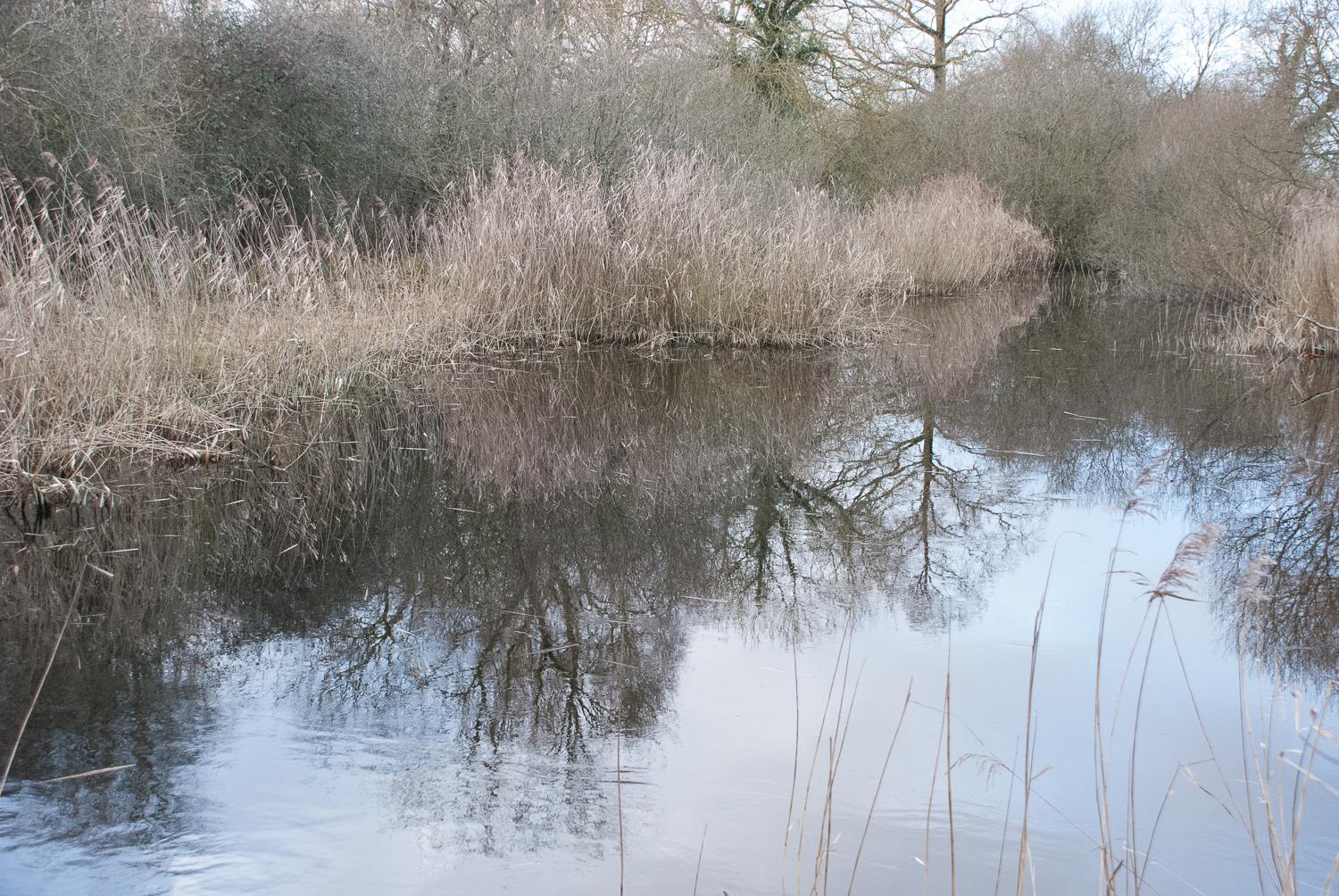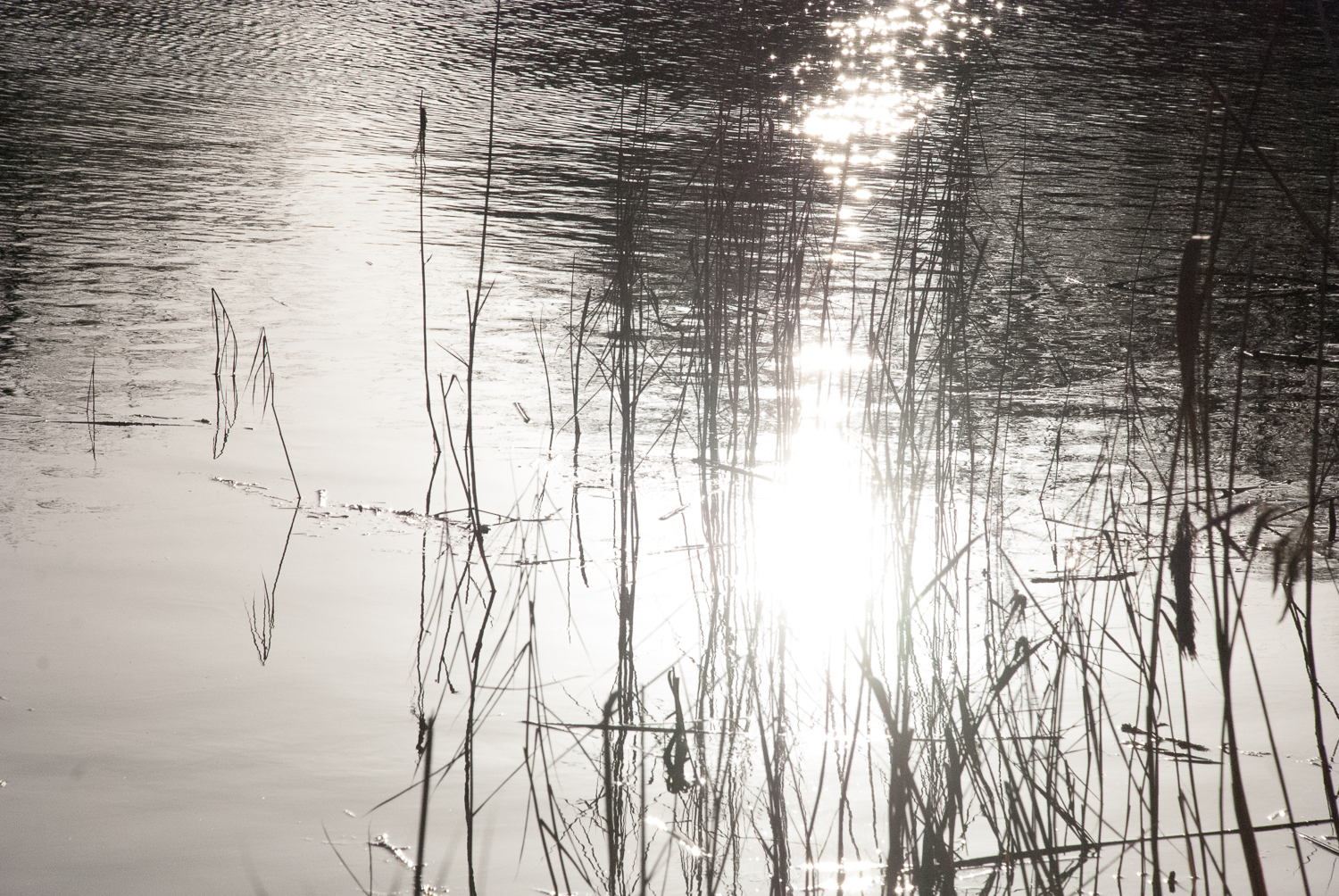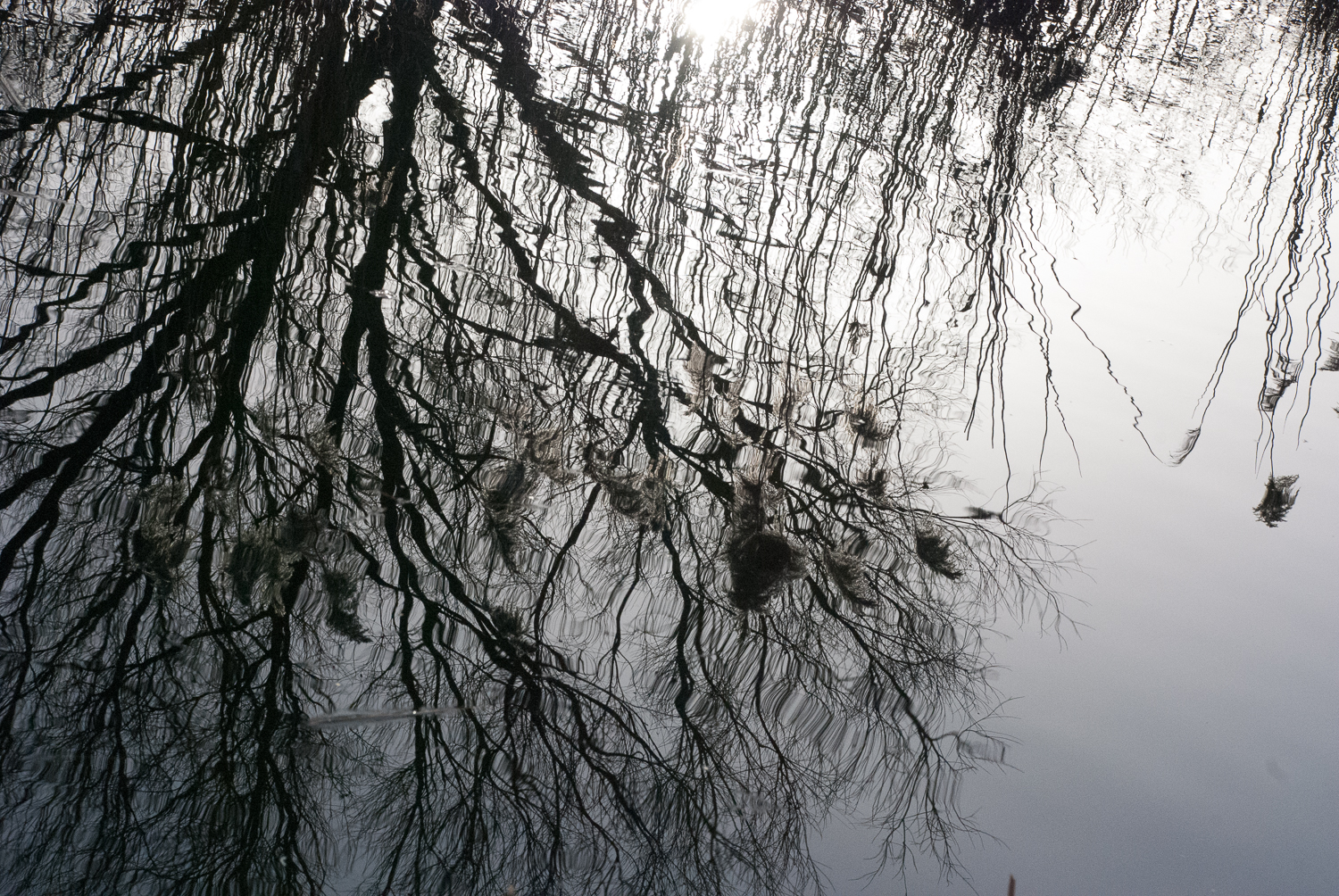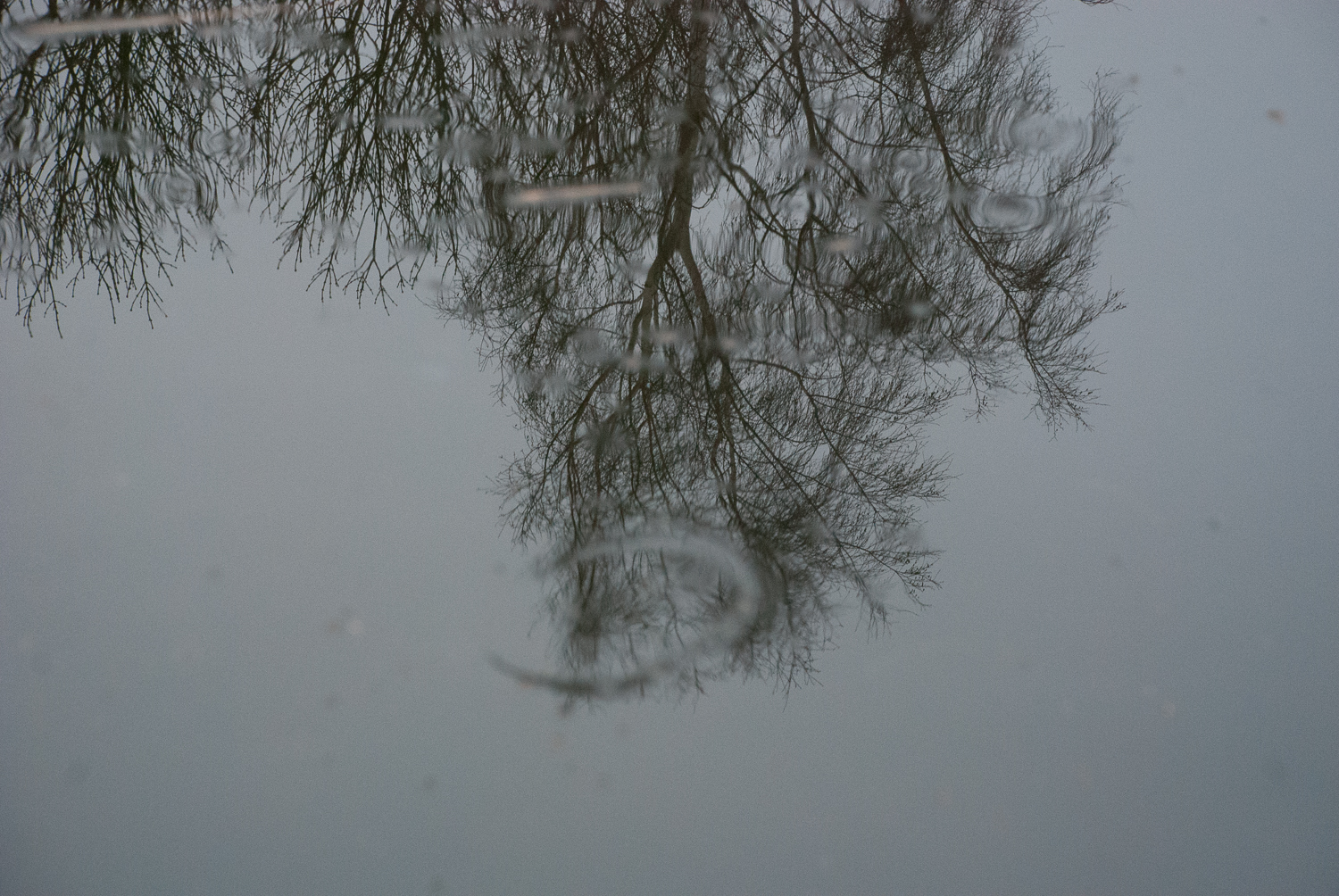First, some extracts from my notes:
Reflection. Noun.
- The throwing back by a body or surface of light, heat or sound without absorbing it.
- Serious thought or consideration
- An idea about something
- An image seen in a mirror or shiny surface
- A thing that is in consequence of something else
The physical law of reflection states that the angle of incidence equals the angle of reflection - if a wave hits the surface at 36°, it will be reflected at 36°. When light waves hit smooth surfaces the waves are reflected uniformly and can form images. Rough surfaces, such as moving water, scatter light in all directions – but each tiny bit of the surface still follows the rule that the angle of incidence equals the angle of reflection.
When light hits a surface, one of three things may happen:
- It is absorbed by the surface
- It passes through the surface to the other side
- It is reflected back.
Materials may show a mix of these behaviours, with a proportion of light being absorbed, transmitted or reflected according to the properties of the material. If light waves strike the surface head on, i.e. at 90°, they will go straight through and come out the other side. There is a critical angle at which light will no longer pass through the surface but be reflected.
An image in a flat mirror:
- is the same distance behind the mirror as the object is in front
- is the same size as the object
- is the right way up
- is reversed
- is virtual – it appears to be behind the mirror.
Symbolism:
- The word mirror comes from Latin mirari – to wonder or marvel at. The Latin word for mirror, speculum, is related to the verb to speculate.
- Many beliefs associate mirrors with a capacity to reveal the essential nature of a thing – its hidden or potential qualities.
- Self-knowledge – what we see may depend on our receptiveness or resistance to the insights offered.
- The sense that beyond the mirror-image of immediate reality might be something quite different.
- Passivity – the surface reflects the thing but is unchanged by it.
So where does this get me ...
There is something about the image cast on the surface of the water, but not being part of the water. The image can be very distinct but is unreal, insubstantial, ephemeral. It is disrupted by any movement of the water or change in the light. Plants growing in the water cover or pierce it, disrupting your sense of figure and ground. It is a reversal of reality. It is a trace that cannot exist without the object it reflects but has no physical substance of its own. And yet, on the fen, it can sometimes present you with a clearer view of the things edging the water.
The aesthetic appeal is that the reflection is an abstracted image – a partial and distorted view of the original. A sort of drawing on the water. The reflections I've observed at Wicken covered the full range of clarity from clear, sharp image through every shade of fragmentation to a formless blur that is little more than a green shadow. It is interesting that reflections are traditionally associated both with deception and with a capacity to reveal the truth or hidden qualities of a thing. There is also something about indirect knowledge – many scientific measurements have to be taken indirectly – you get around the impossibility of measuring the thing itself by measuring its echoes or reflections in sound or light waves. Like this recent example. You know the thing by looking at its reflection
I photographed hundreds of reflections on our visits. It sometimes made for slow progress along the lodes or drainage ditches when the conditions were particularly good for this. These photographs have become the basis for much of my work for the exhibition. Reeds or rushes dominate because they are what is most often reflected. But the variety of marks and forms I collected is significant.
Initially I chose some of the clearer and more realistic images, but used printing techniques that introduced distortion. Later I introduced more distorted images that are more obviously reflections. The fragmentation and dissolution of the form reflected in the surface create a pleasing ambiguity. The resulting work is the most figurative I have ever made; but is constructed entirely from abstractions, reflections, rather than images of the reeds themselves.











